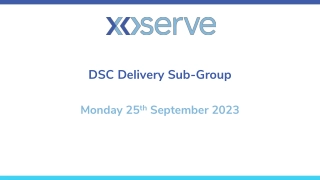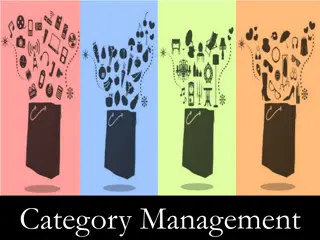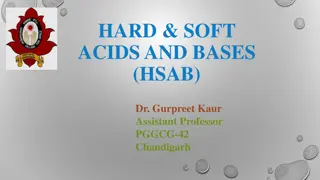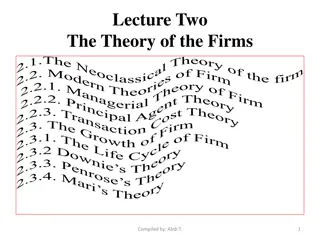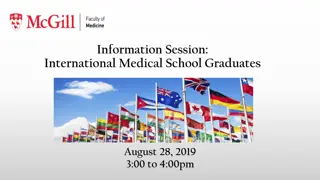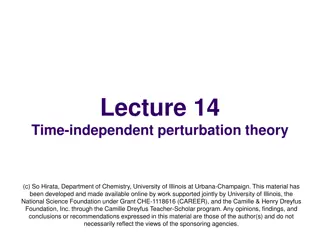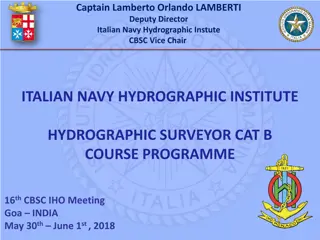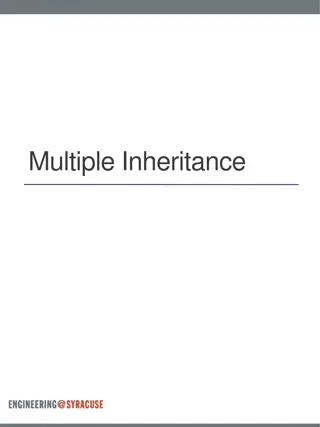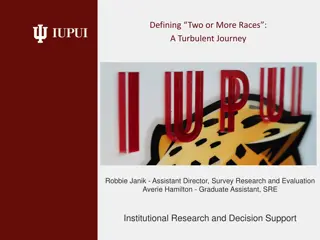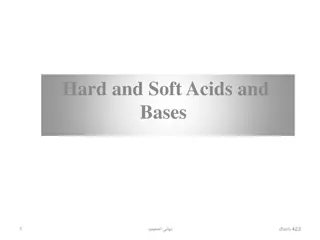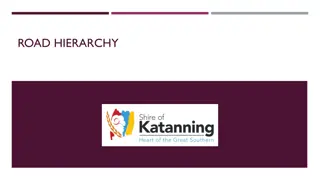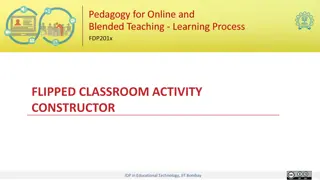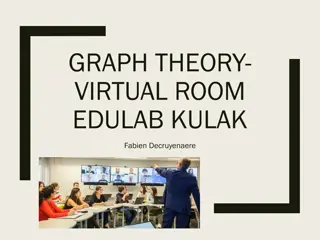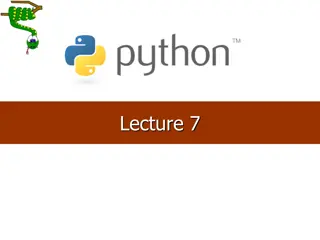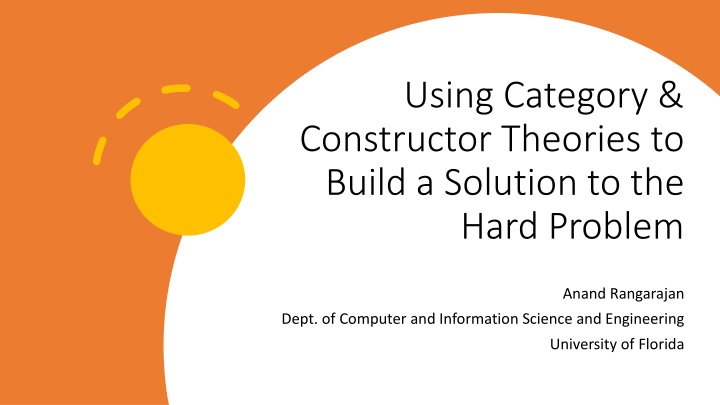
Using Category & Constructor Theories for Hard Problem Solution
Explore the application of Category & Constructor Theories to tackle the challenging Hard Problem related to consciousness, particles, and systems. Delve into the fundamentals of Category Theory, its relevance to Selfons, and the connections to experience and objects.
Download Presentation

Please find below an Image/Link to download the presentation.
The content on the website is provided AS IS for your information and personal use only. It may not be sold, licensed, or shared on other websites without obtaining consent from the author. If you encounter any issues during the download, it is possible that the publisher has removed the file from their server.
You are allowed to download the files provided on this website for personal or commercial use, subject to the condition that they are used lawfully. All files are the property of their respective owners.
The content on the website is provided AS IS for your information and personal use only. It may not be sold, licensed, or shared on other websites without obtaining consent from the author.
E N D
Presentation Transcript
Using Category & Constructor Theories to Build a Solution to the Hard Problem Anand Rangarajan Dept. of Computer and Information Science and Engineering University of Florida
The Hard Problem Why is anything accompanied by experience (Chalmers)? Mainstream response: Emergence Alternatives Structure and dynamics Information processing Neuronal dynamics Physicalism and Materialism Panpsychism (Rosenberg, Skrbina, Strawson) Dual aspect Theory (Atmanspacher) Neutral Monism (Banks) Idealism (Kastrup) Russellian Monism (Stoljar) Self-organization Complexity Systems theory Confused with holism
Our slogan: Complex AI systems are not accompanied by experience Age old distinction: systems versus particles (back to 19th century atomism) Systems: Capable of complex information processing Particles: Highly unified and spatiotemporally bounded Systems: Wrong way of thinking about consciousness Intuition: Connection between radically unified experience and particles? Strawson s subjects of experience suggestive Systems versus Particles
SoE more akin to a particle than a system (crazy hypothesis) Natural rather than artifactual or cultural Bid goodbye to the 19th century: Particles are formed in quantum field theory (QFT) via second quantization SoEs are special selfons accompanied by experience (Rangarajan) Second quantization in QFT creates particles from basic fields But second quantization is a functor (as in category theory pointed out by Edward Nelson)! Can we model SoEs (or selfons) using category theory? Generalize from QM, QFT and move to modeling using category theory Subjects of Experience, the Physical and Selfons
id? Category Theory: Basics id? ? ? ? ? Definition: A category ? has constituents: 1. Objects: A collection Ob(?), elements called objects 2. Morphisms: For every pair ?,? Ob ? a set of morphisms ?:? ? from ? to ? 3. Identity: For every object ? Ob(?) an identity morphism id? on ? 4. Composition: For every three objects ?,?,? Ob ? , if ?:? ?, ?:? ? and :? ? then = ? ?:? ? Intuition: Morphisms are the glue relating objects Composition formula: Transitivity in object relations Relevance to HP: Selfons as objects (accompanied by experience) and intersubjectivity as evidence of morphisms id? ?
Selfons as a Category Selfons ? as objects in a category Morphisms map subjects onto each other Intersubjectivity as the grounding intuition ?:Alice42 Bob108 Composition: If ?:Alice42 Bob108 and ?:Bob108 Charlie23, then = ? ?:Alice42 Charlie23 Set up a physical category ? Functors :? ? and :? ? need not be inverses. Selfons may impose further constraints in configuration space (Rosenberg) Importance of configuration space highlights tie to QFT and role of possibilities and not actualities id? id? ? ? ? ? ?:Alice42 ?:Bob108 ?:Charlie23 id? ? id (?) (?) ? ? id (?) (?) (?) ? ? (?) ? ? ? ? id? id? ? ?
Constructor Theory Very little coverage in TSC series of conferences Move away from trajectories, initial conditions and dynamical laws Formulate physics based on what is possible and what is impossible in specific tasks David Deutsch: pioneer of this approach Chiara Marletto: a leading figure in present day constructor theory
Relevance to Consciousness Studies Principles: 1. All laws expressible entirely in terms of statements about which physical transformations are possible and which are impossible and why. 2. State of the combined system ?1 ?2 such that any construction undergone by ? in ?1 cannot change state ? of ?2 Linearity in QM emerges from principles like these With laws expressed in terms of possibilities, construction of Russellian monism becomes a story of constraints on sets of possibilities Space, time, particles, fields, energy all derived concepts not fundamental. Close affinity with Russellian monism
Categories need not be equivalent Functors can exist between non-equivalent categories Brains Subjects of Experience Functor from the physical to the category of brain states Functor from the physical to selfons Equivalent categories Non-equivalent categories Information processing in brains: a convenient shorthand Selfons can enact constraints restricting sets of possibilities Natural fit: phase space dynamics Natural fit: configuration space Model: Lagrangian dynamics Model: Constructor Theory
References 1. Dual-aspect Monism la Pauli and Jung, Harald Atmanspacher, J. Conscious Studies, 19(9-10):96-120, 2012. 2. The Conscious Mind: In Search of a Fundamental Theory, David J. Chalmers, Oxford University Press, 1996. 3. The Constructor Theory of Information, David Deutsch and Chiara Marletto, arXiv:1405.5563 [quant-ph] 4. The Structure of Objects, Kathrin Koslicki, Oxford University Press, 2008. 5. The Ultimate Constituents of the Material World: In Search of an Ontology for Fundamental Physics, Meinard Kuhlmann, Ontos Verlag, 2010 6. Natural Kinds and Conceptual Change, Joseph LaPorte, Cambridge University Press, 2004. 7. Subjects of Experience, Edward J. Lowe, Cambridge University Press, 1996. 8. Can a Quantum Field Theory Ontology help resolve the Problem of Consciousness, Anand Rangarajan, Quantum Reality and Theory of nya, Springer Nature, pp. 13-26, 2019. 9. A Place For Consciousness: Probing the Deep Structure of the Natural World, Gregg Rosenberg, Oxford Univ. Press, 2004. 10. Quantum Field Theory and the Standard Model, Matthew D. Schwartz, Cambridge Univ. Press, 2013 11. Category Theory for the Sciences, David I. Spivak, The MIT Press, 2014. 12. Ignorance and Imagination: The Epistemic Origin of the Problem of Consciousness, Daniel Stoljar, Oxford University Press, 2006. 13. Physicalism, Daniel Stoljar, Routledge, 2010. 14. Selves: An Essay in Revisionary Metaphysics, Galen Strawson, Clarendon Press, 2009. 15. Material Beings, Peter van Inwagen, Cornell University Press, 1990.
Contact information: Prof. Anand Rangarajan Department of Computer and Information Science and Engineering University of Florida E-mail: anandr@ufl.edu

